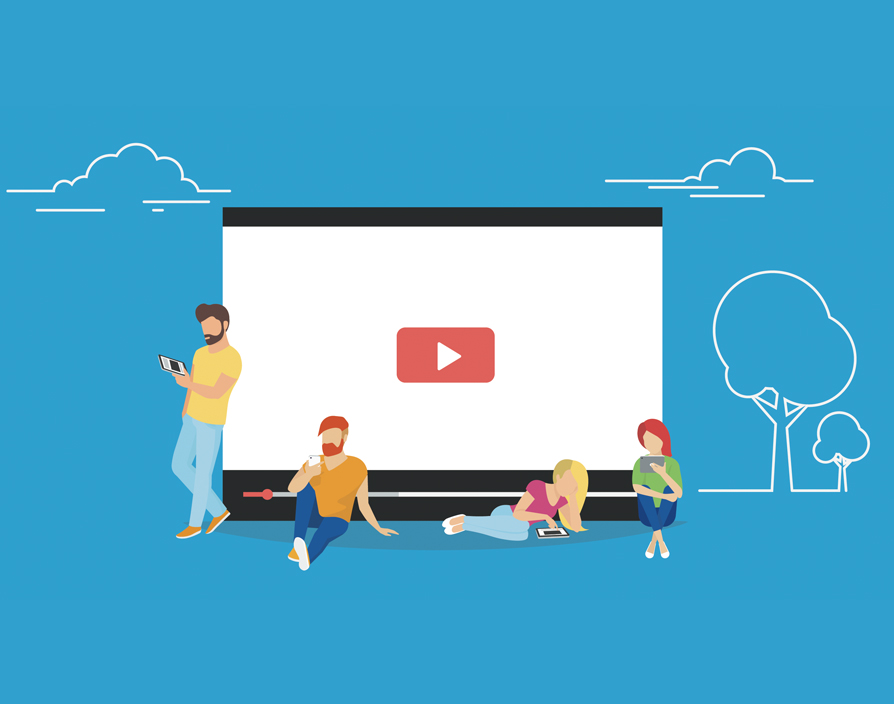While apps like Periscope sparked live streams of everything from storm chasers documenting hurricanes to members of the public finding increasingly ingenious ways to cross a puddle in Newcastle, Facebook Live has definitely brought it into the mainstream. But it’s not just consumers that are broadcasting their most intimate moments: savvy startups are also using live streaming to create unmissable experiences.
Although broadcast and even streamed video have typically been fairly passive media, downloading content into viewers’ heads after the fact, social platforms have geared consumers to expect more interactive experiences that offer opportunities for instant feedback. “With […] social networking becoming an essential element in all of our lives, users are more comfortable with the lean-forward experience that online platforms offer,” says Chris Dabbs, CEO of digital broadcasting at Karma, the live-steaming and video-production company. Consumers already expect to be notified of breaking news and cultural phenomena within minutes and be able to respond accordingly; live streaming simply plugs into this well-established habit and allows users to watch and respond to things in real time as they unfurl. “With the advanced targeting of the social channels, each user is being notified of live content that is directly relevant to them, as it happens,” Dabbs says. “This gives huge power to both brands and the users themselves.”
And with live streaming exploding in this way, it’s hardly surprising that startups are eager to get involved, particularly given how the medium can provide an avenue straight into audience’s affections. “Consumers today want to be connected with brands in special ways,” says Brian Cheek, senior manager of display at Sprinklr, the social-media-management platform. “If I feel like a brand knows me, obviously that is going to drive more purchases.” Creating intimacy between a brand and consumers can quickly lead audiences to feel like they have a personal relationship with that company. And given live streaming by its very nature is much more honest and transparent than heavily scripted and edited marketing messages, it offers the perfect way for companies to show the human face behind their brand. “Live streaming allows brands to take down that corporate veil,” Cheek says. “Offering that glimpse behind the scenes to a brand advocate is really powerful.”
But showing a little vulnerability in your vids isn’t the only way to boost engagement: another reason live streaming can prove so sticky is the fact it allows consumers the chance to interact with content in the moment. “Consumers can respond in real time, offering them [instant] gratification and giving brands direct and immediate feedback,” says Dabbs.
And the nature of social media means that these interactions can echo even louder than one might expect. Dabbs splits people that watch live streams into evangelists, participants and observers. While evangelists are dedicated advocates that love to shout about a brand’s content, it is when this piques the curiosity of participants and provokes them to comment and like that the magic happens. “Not only does this provide the immediate feedback to the brand but, by actually participating with the live feed, they are also creating a larger reach due to the social network algorithms,” Dabbs says. “[Because of the] prioritisation of posts and social promotions […] live content will appear higher on the social timeline than all other content.” This then allows a stream to reach a much larger group of observers, who are engaged by the experience and absorb the brand’s message. “Live streams remain one of the most powerful ways to reach the largest audience through social networks,” says Dabbs.
Clearly the way live content spreads on social media is extending startups’ reach and giving them more bang for their buck. But perhaps the biggest benefit to smaller brands is the fact that live streaming doesn’t take a whole lot of lucre in the first place. “It doesn’t have to be a major production anymore,” Cheek says. “These more impromptu, behind-the-scenes kinds of live streams don’t require a huge production and a lot of money.” Thanks to the fact that an entrepreneur with an iPhone or a CEO with an HTC can create unmissable moments just as well as a billion-dollar brand with a full film crew, live streaming is helping to democratise video content. “It’s restoring the balance now so small brands can compete with larger ones that may have access to more funds,” says Cheek.
Certainly successful live-streaming campaigns can come in a variety of shapes and sizes. For the European launch of its Noosa FlyteFoam trainers for example, Asics went for a no-holds-barred live-streamed extravaganza in Tower Bridge that drew in over 90,000 viewers. “The Facebook Live stream was hosted by Vogue Williams with a number of special guests,” says Dabbs. “It featured exclusive interviews with product designers […] an interactive leaderboard, a running challenge, product displays and a DJ set.” Conversely, while no one can claim that Paris Fashion Week is a modest affair, it was its candid and comparatively uncomplicated live stream that proved particularly popular on social media. “Using Rihanna’s own personal Instagram account, over 100,000 viewers tuned in to watch live as she made the final inspection of each look backstage,” Dabbs says.
Obviously not every live stream is going to be a viral sensation drawing in hundred of thousands of hits and, as in any medium, it’s not always clear what will encourage viewers to repost content. But it’s safe to say that the things that rack up the most shares tend to be the unscripted occurrences that take people by surprise. “What really gets sticky is that magical moment when something happens that you weren’t expecting,” says Cheek. “That’s where you really hit it right: your brand advocates will think ‘woah, there was no way that was staged’ and it will go crazy on social.” He recalls a recent instance where the social-media manager of the Boston Red Sox baseball team was live streaming its spring training and was on the hunt for star player Big Papi Ramirez: they eventually found him sat in full uniform fishing in a stream behind the field. “If you’re a fan of the Boston Red Sox and you see that, you’re going to share that with everybody you know,” Cheek says. “And what did it cost the Red Sox to do that content? A little bit of time. Zero dollars.”
Unfortunately, this very spontaneity can sometimes end up causing brands to come a cropper. “The power of a live broadcast can work against brands,” Dabbs says. “We have often seen campaigns [with] shaky, unprofessional results, poor audio and badly thought-through creatives.” Launching straight into a live stream with little thought is unlikely to achieve meaningful results, at best producing lacklustre content that fails to capture consumers’ interest and at worst seeing unforeseen catastrophes being broadcast to the world. “A campaign needs to be well planned, professionally produced and have the creativity to grab the audience’s attention,” says Dabbs.
Even if things don’t quite go your way though, consumers are far more forgiving when live events go awry and savvy startups can always find a way to spin things to their advantage. “Live content always has that possibility of something happening that wasn’t planned,” says Cheek. “You can always cut away to something else and if something undesirable happens there’s always a way to turn it around and fix it.” Moreover, being overly precious and protective over the content that your business puts out can end up undermining the very lack of polish and pretension that audiences have come to expect from live streams. “The big companies really want to protect their brand but they have to get over that stage fright,” Cheek says. “You’ve got to be a little bit more impromptu and let it happen.”
And while live streaming has definitely reached the mainstream and increasing numbers of companies are joining the party, as long as startups remember this it should still be easy to stand out from the crowd. “Just be agile and be very creative: that’s what your fans are expecting,” Cheek concludes. “They just want to be entertained and, thanks to the phone in their hands, you can bring them that pretty much anytime, anywhere.” ![]()
Share via:








































